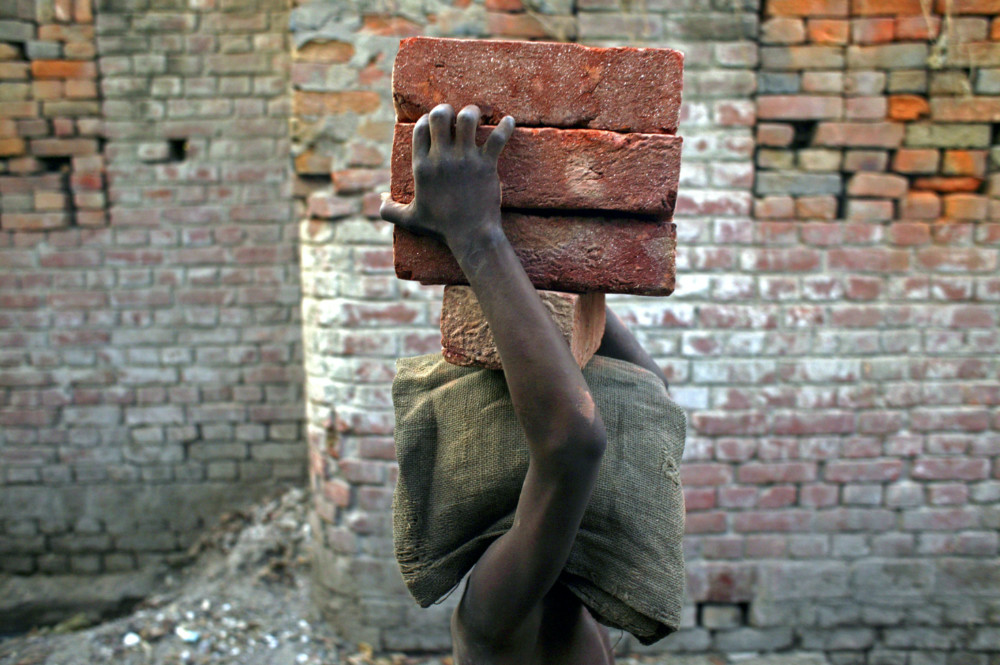A goal to stamp out child labour by 2025 is out of touch with global realities and could push many working children into worse poverty and marginalisation, a group of academics said this week as they called for more realistic targets.
The United Nations launched the International Year for the Elimination of Child Labour last week, saying urgent action was needed to meet the goal as COVID-19 puts more children at risk of underage work and threatens decades of progress.

A child labourer carries bricks in Bihar-e-Sharif town, about 60 kilometres from Patna, on 9th April, 2007. PICTURE: Reuters/Adeel Halim/File photo.
According to the academics, the objective was unrealistic even before the pandemic disrupted schooling and increased hardship for millions of children around the world.
“Removing them from work is no help if this drives them deeper into the famine and broken lives that the work was undertaken to mitigate,” said an open letter signed by 101 professors and researchers and published by Open Democracy.
Instead of basing anti-child labour targets on “emotional and ideological convictions”, the academics said policies should consider the varied experiences and coping mechanisms of working children and their families, as well as scientific research.
“The current global effort to eradicate child labour is based on the experiences of the ideal of white, Western, middle-class childhoods,” said Tatek Abebe, professor of childhood studies at the Norwegian University of Science and Technology in Trondheim.
“It draws on the belief that children should go to school, and not participate in labour. However, the reality of children’s lives in most parts of the world is not labour-free. Child labour is not necessarily bad,” said Tatek, one of the signatories.
Appropriate work can bring educational benefits and should be encouraged, the letter said, calling for long-term strategies to eliminate harmful child labour in ways that improve children’s wellbeing rather than striving for an outright ban.
Tatek said improving children’s working conditions rather than banning them from working, and ensuring access to institutional and legal support to protect them from harm and exploitation were more realistic approaches.
“Eliminating child labour as a resolution without addressing fundamental structural problems of poverty and inequality will not be successful,” he told the Thomson Reuters Foundation.
Interventions should also be adjusted to other challenges such as climate change, which will further worsen children’s lives and conditions in the post-pandemic world, the letter said.





